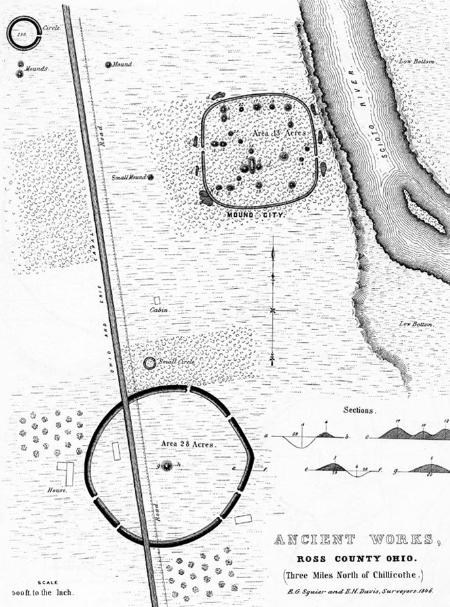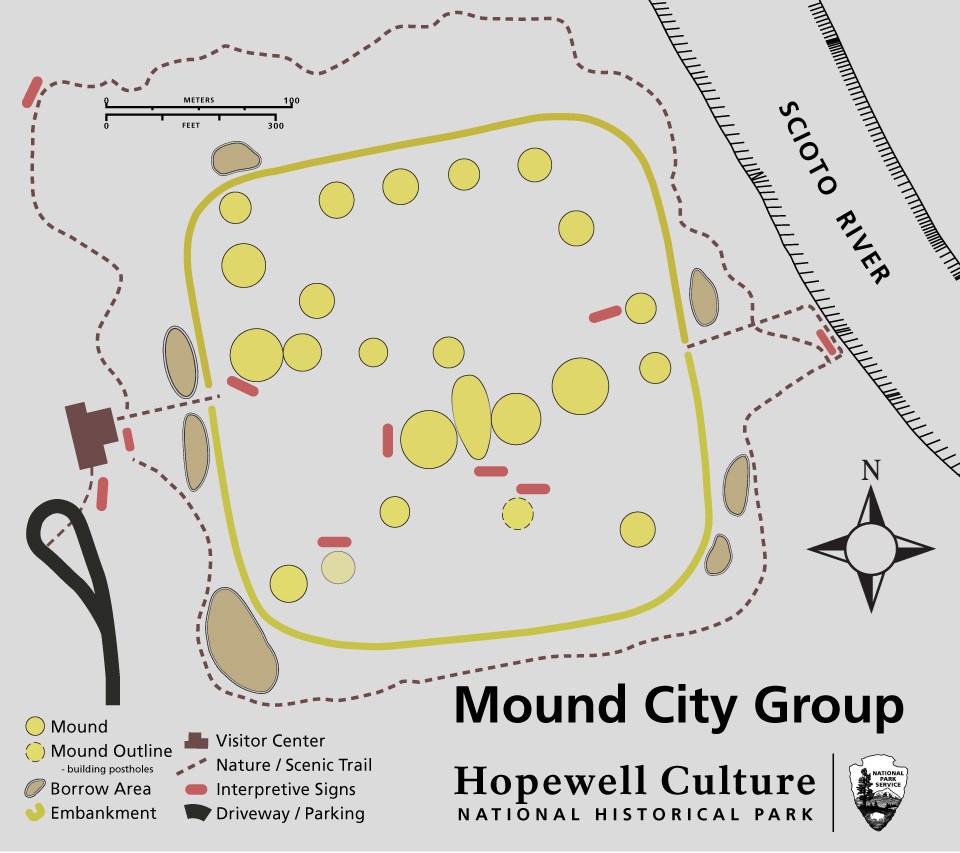
Squier & Davis, c.1848 IntroductionMound City Group is the only fully restored Hopewell earthwork complex. As such, it is a national treasure. Here, visitors who walk quietly through the enclosure and among the mounds can still experience a sense of what it may have been like to gather at a Hopewell ceremonial site two thousand years ago. Camp ShermanDuring World War I the Mound City Group site was occupied by a military training center known as Camp Sherman. In the early 1920s after Camp Sherman was razed, the Ohio Historical Society excavated the site and began reconstruction of the Hopewell earthworks and mounds. 
Ohio History Connection Ceremonial GatheringsThis wonder of the ancient world was constructed by Native Americans over many centuries between A.D. 1- 400. Mound City Group’s walls enclose at least two dozen mounds in an area larger than ten football fields. Never the less, compared to the many giant complexes located around the Chillicothe area, Mound City Group is a relatively small Hopewell earthwork. Careful ConstructionThe mounds of Mound City Group are so much more than just heaps of dirt. The process by which these American Indians established a burial mound is long and complicated. Many visitors are surprised to learn that where each burial mound is seen today, there once stood a building. The first step in the mound building process was to construct a large ceremonial building of poles and bark with a plastered clay floor. Inside, fires burned in clay basins and ceremonies were conducted. When the ceremony was a funeral, the Hopewell cremated the body. The ashes were entombed on the floor of the building beneath a small mound of clay. About one hundred cremated remains were found at Mound City. A National Park is BornThe Ohio History Connection funded the reconstruction of Mound City Group in the 1920’s. The reconstruction was based on the maps of Squier and Davis in order to be as accurate as possible. One mound was left unreconstructed so that visitors could appreciate the underlying structure of the ceremonial building. Visiting the SiteThe Mound City Group Visitor Center is located at 16062 State Route 104, Chillicothe, OH 45601. Visitor center hours are 8:30 am to 5:00 pm, every day of the week (except Thanksgiving Day, Christmas Day & New Year’s Day). Park grounds are open every day from dawn until dusk. Site Map & Trail Map
NPS / Tom Engberg |
Last updated: July 31, 2023
